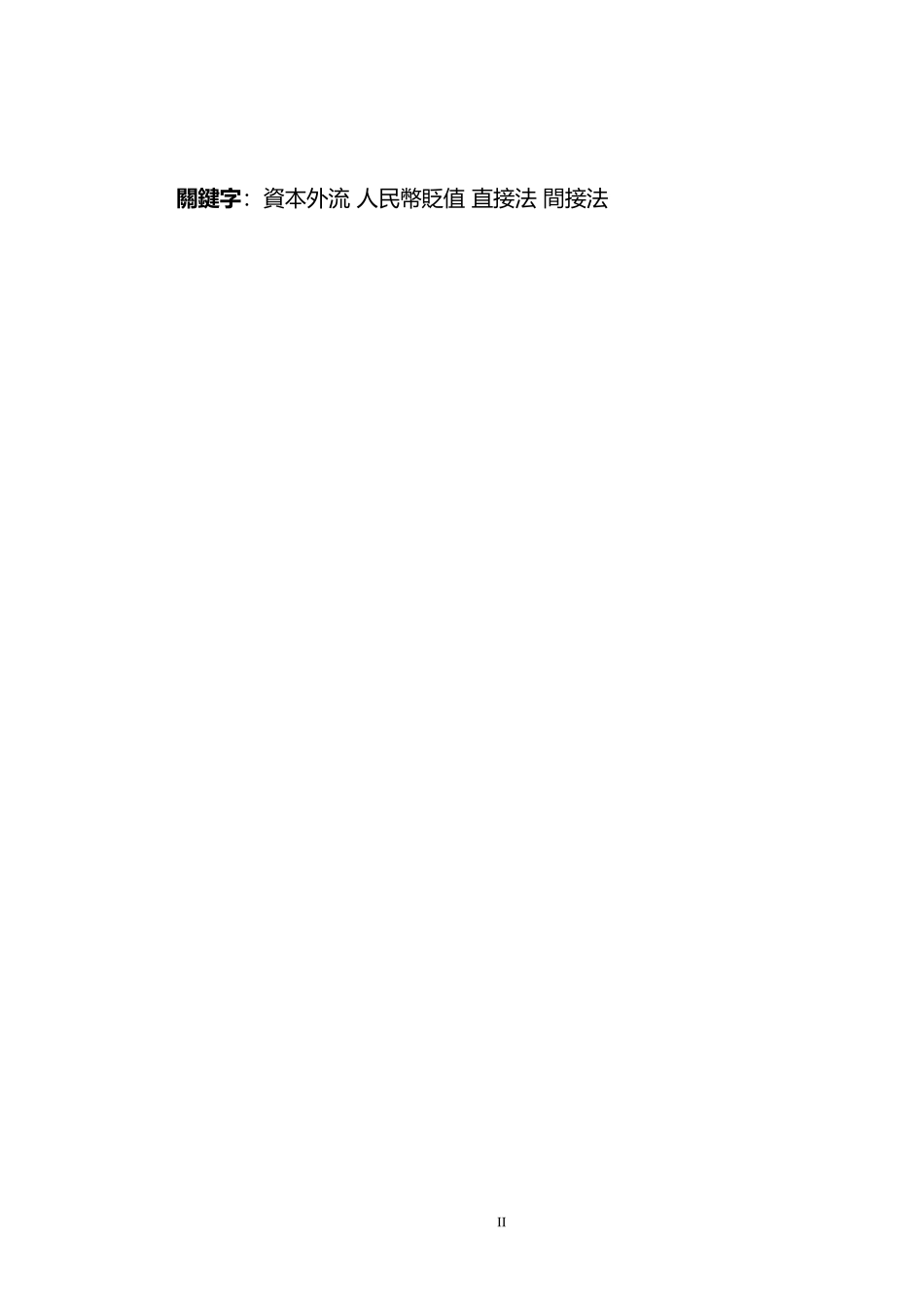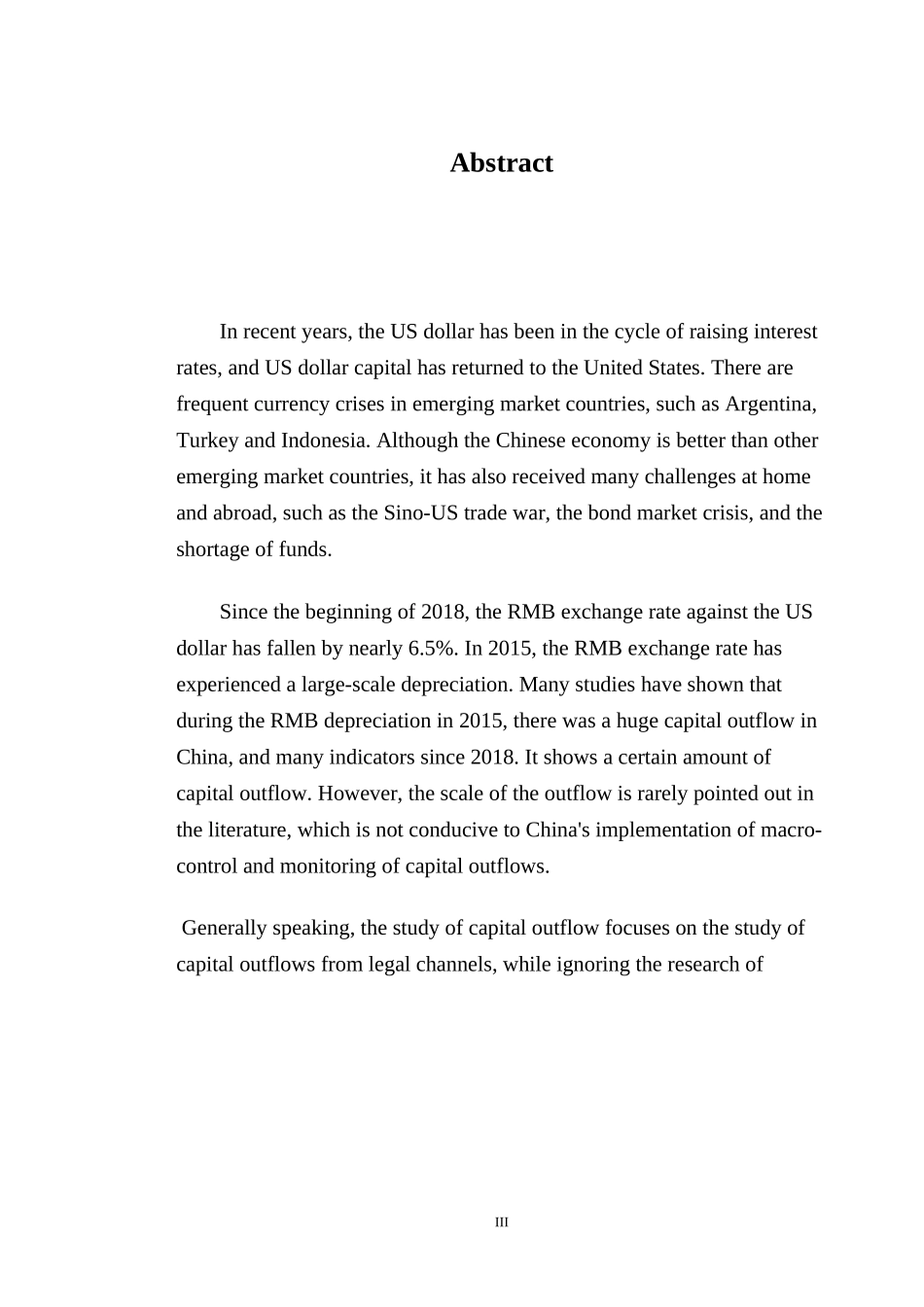I摘 要近年來,美元處於加息週期之中,美元資本紛紛回流美國,新興市場國家頻頻出現貨幣危機,如阿根廷、土耳其和印尼。中國經濟在新興市場國家中雖然較好,但也受到國內外諸多挑戰,如中美貿易戰、債市危機、資金荒等。2018 年初至今,人民幣兌美元匯率累計跌幅近 6.5%,在 2015年人民幣匯率已經出現過較大規模的貶值,很多研究表明,在 2015年人民幣貶值期間中國出現數值巨大資本外流,2018 年以來很多指標顯示有一定規模的資本外流。但外流的規模很少有文獻指出,這不利於中國實施宏觀調控和對於資本外流情況的監控。一般對資本外流的研究著重於對合法管道的資本外流研究,而忽視了地下管道的研究,我們認為地下管道尤其是進出口管道的資本外流有相當大的規模,我們的研究試圖對合法管道和地下管道之間建立一個研究框架,估計出人民幣貶值情況下的資本外流規模。II關鍵字:資本外流 人民幣貶值 直接法 間接法IIIAbstractIn recent years, the US dollar has been in the cycle of raising interest rates, and US dollar capital has returned to the United States. There are frequent currency crises in emerging market countries, such as Argentina, Turkey and Indonesia. Although the Chinese economy is better than other emerging market countries, it has also received many challenges at home and abroad, such as the Sino-US trade war, the bond market crisis, and the shortage of funds. Since the beginning of 2018, the RMB exchange rate against the US dollar has fallen by nearly 6.5%. In 2015, the RMB exchange rate has experienced a large-scale depreciation. Many studies have shown that during the RMB depreciation in 2015, there was a huge capital outflow in China, and many indicators since 2018. It shows a certain amount of capital outflow. However, the scale of the outflow is rarely pointed out in the literature, which is not conducive to China's implementation of macro-control and monitoring of capital outflows. Generally speaking, the study of capital outflow focus...












